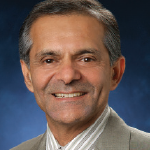8. Physician workforce: President Obama stated that we need more primary care physicians. But how do we encourage this when there are so few incentives because of diminished reimbursement? The decline in primary care providers is well known; however, he offered no solutions as to how to increase the number of primary care physicians.
9. Medical education: We will need more physicians in the future to take care of the aging population. How can this be done when the debt burden of education and residency is so enormous? Many graduates today will only be able to service their debt rather than paying off the principal before some are forced to declare bankruptcy.
10. Sustainable growth rate (SGR): The President received a standing ovation when he addressed the SGR, the legislative Pandora’s Box that has resulted in inadequate reimbursement for medical services for many years and with limited updates that do not keep up with the costs of practice. This controversial reimbursement plan has been opposed by leading medical societies, including the ACR, and many healthcare economists. However, he offered no alternative to the SGR.
11. Medicare Payment Advisory Commission (MEDPAC): President Obama presented the idea that MEDPAC would be elevated to a higher federal level to address economic problems and reimbursement inequities. But do we really need another federal regulatory agency? Or do we need the ability to freely contract with the patient for professional services free of the encumbrances of third parties and government regulations?
12. Cost: The trillion-dollar cost for these programs would ostensibly be offset by universal coverage either through the private or public option. Funding for this ambitious plan would be achieved by eliminating billions of dollars out of the current system of reimbursement. However, this will only aggravate the already hard-pressed healthcare facilities, physicians, and other providers. The CBO stated that universal coverage still will not be achieved, in spite of this massive expenditure of money. Do we really need to burden our national debt further and still not achieve healthcare coverage for the uninsured and underinsured? Here is where we will have to await the final plans of the congressional committees before we know exactly what will be achieved.
The House of Delegates’ response was more enthusiastic to President Obama’s speech than to Clinton’s. The delegates appreciated the president’s visit and his attempt to address the issues. However, the overwhelming discussion after his visit was that the “devil is in the details,” which we may not know until the final plan is completed. Finally, the delegates recognize that the president’s rhetoric may exceed his ability to enact a plan. It will be Congress that will ultimately dispose or craft the plan that will finally arrive on his desk. At that time, the moment of truth for health system reform will have arrived.

